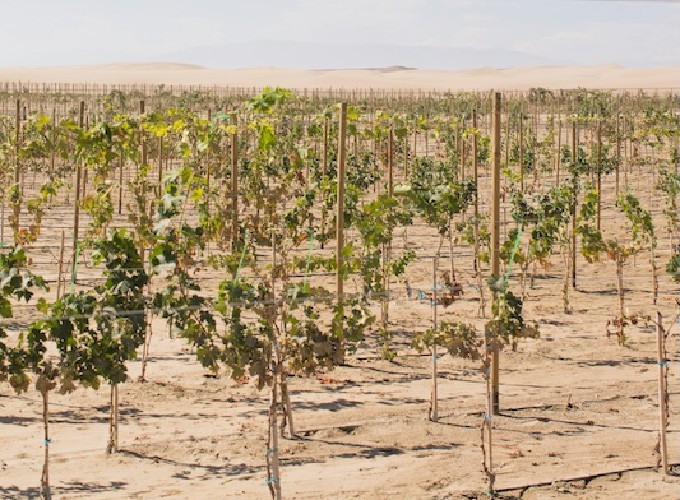Introduction
Agriculture in arid regions, particularly in Rajasthan, India, faces a unique set of challenges due to extreme climatic conditions, poor soil quality, and scarce water resources. These factors make traditional farming practices difficult and often unsustainable. However, advancements in Artificial Intelligence (AI), particularly Deep Neural Networks (DNNs), offer new opportunities to address these issues by optimizing resource use and boosting productivity. This article explores how AI, with a specific focus on DNNs, can revolutionize arid agriculture in Rajasthan. 🌍🌱
The Challenges of Arid Agriculture in Rajasthan 🌵💧
Rajasthan, home to the vast Thar Desert, experiences an arid climate where farmers struggle with:
- Water shortages: Erratic rainfall patterns make it difficult to manage irrigation.
- Low crop yields: Limited water and poor soil conditions lead to reduced agricultural output.
- Soil degradation: Issues such as salinity, erosion, and nutrient depletion further hinder farming efforts. These challenges necessitate innovative technological solutions to improve the efficiency of agricultural practices in the region.
How AI and DNNs Can Help 🌐🧠
1. Precision Irrigation and Water Management 🚰💧
Water scarcity is one of the most pressing issues in Rajasthan. AI systems, particularly deep neural networks, can be employed to analyze data from soil moisture sensors and weather patterns to create precise irrigation schedules. This ensures crops receive the exact amount of water required, preventing waste. Satellite imagery processed by Convolutional Neural Networks (CNNs) can map water-stressed areas and detect changes in crop health. This approach helps farmers adjust irrigation schedules based on real-time data, reducing the chances of crop failure.
2. Soil Health Monitoring and Fertility Management 🌱📊
Soil quality is crucial in determining crop productivity, especially in arid regions. AI-powered models can assess soil health by analyzing data from soil sensors that track moisture and nutrient levels.
AI algorithms can recommend the right type and amount of fertilizer by analyzing data related to soil composition (e.g., nitrogen, phosphorus, and potassium). Recurrent Neural Networks (RNNs) can forecast changes in soil quality over time, enabling proactive measures to prevent degradation. These techniques contribute to precision farming, where resources like water and fertilizers are applied efficiently, lowering both environmental impact and costs.
3. Crop Selection and Yield Prediction 🌾📈
Selecting the right crops for arid conditions is vital for increasing yields. Deep neural networks can analyze historical data on crop performance, local climate, and soil conditions to help farmers choose drought-resistant crops.
AI models can predict crop yields based on key variables such as temperature, rainfall, and soil health, giving farmers insights for better planning. Generative Adversarial Networks (GANs) can simulate various climate scenarios to predict crop performance in changing conditions. This helps farmers in Rajasthan make more informed decisions about crop selection, improving overall productivity in arid climates.
4. Pest and Disease Detection 🐛🦠
Pest infestations and crop diseases can devastate yields, particularly in regions with already scarce resources. Deep learning models, especially those based on image recognition, can detect early signs of pests or diseases.
CNNs can analyze images of crops to identify patterns of disease or pest damage on leaves and stems. Real-time data from drones or smartphones can alert farmers to issues early, allowing them to take action before the problem worsens. By minimizing the need for chemical pesticides, this approach reduces environmental harm while preserving crop yields.
5. Climate Adaptation and Forecasting 🌦️📡
Rajasthan’s farmers must contend with an unpredictable climate. AI can offer real-time weather forecasts and long-term climate predictions by analyzing vast datasets.
Long Short-Term Memory (LSTM) networks, a type of RNN, can provide accurate long-term forecasts, enabling farmers to prepare for extreme weather events such as droughts or floods. These forecasts inform decisions on planting, irrigation, and harvesting, reducing the risk of crop failure.
6. Autonomous Farming and Robotics 🚜🤖
In addition to data analysis, AI-driven robotics can help automate essential farming tasks like planting, watering, and harvesting—reducing manual labor in arid regions.
Autonomous drones equipped with AI can monitor crops, apply fertilizers, and irrigate fields with precision. AI-powered tractors can plant seeds and plow fields efficiently, optimizing resource use in large areas of arid land.
Conclusion 🌾🤖
Artificial intelligence, particularly deep neural networks, has immense potential to transform agriculture in Rajasthan’s arid regions. By integrating AI into farming practices, challenges like water scarcity, soil degradation, and climate variability can be tackled head-on. From precision irrigation to intelligent crop selection and pest management, AI-driven innovations are the key to ensuring sustainable agriculture and improving the livelihoods of farmers in Rajasthan. 🌍🌿
By embracing these technologies, we are moving toward a future where agriculture can thrive even in the harshest conditions, ensuring food security and economic prosperity for all. 🌾🚀
